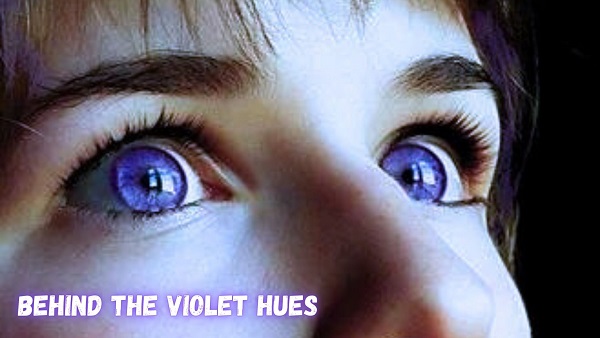A Peek into the Unique World of Color Perception
Ever wondered how colorblind people perceive the world? It's a fascinating topic that is often surrounded by a common misconception: that people with color blindness only see in black and white. That's not quite right, though.
In reality, over 99%
of people who suffer from colorblindness can see some form of color. So, what
does color blindness really mean? It's more accurate to think of it as a lack
of color definition.
For those with color
blindness, colors can appear muted or dull, making it difficult to distinguish
between similar hues. Some may even be unable to see certain colors altogether.
Curious to know what
type of color blind you are? Take the color blind test and find out!
Red-green color
blindness is the most prevalent type, impacting 8% of men and 0.5% of women of
Northern European origin.
For people with
red-green color blindness, it can be challenging to tell the difference between
red and green, as well as between colors that have some red or green in them.
This can make
everyday tasks, such as reading maps or traffic signals, more difficult.
There are other types
of color blindness as well, such as blue-yellow color blindness and total color
blindness (achromatopsia).
People with
blue-yellow color blindness have difficulty distinguishing between blues and
yellows, while those with total color blindness see the world in shades of
gray.
Despite the
challenges that come with color blindness, many people with the condition have
learned to adapt and live normal lives.
Some may use tools
such as color-coded apps or special glasses to help them distinguish between
colors. Others may rely on their other senses, such as memory or context clues,
to identify colors.
Color blindness is
not as simple as seeing in black and white. It's a complex condition that
affects the way our eyes perceive color, leading to a lack of color definition
and difficulty distinguishing between hues.
But with the help of technology and adaptation, those with color blindness can still see the beauty in the world around them.
Mystery of Color Blindness
For such a small
organ, your eyes work incredibly hard, processing all the light that we see
into images. So, what happens when someone has some level of color blindness?
Well, to see color,
our eyes are full of cone cells, which are sensitive to light and will process
that light along your optic nerve and into your brain – these results in color
vision.
When some of the cone
cells are less or more sensitive than they should be, an altered sense of color
is transmitted to the brain.
In-Depth Look into the Varieties of Color Blindness
When it comes to
color blindness, the most frequent ailment is when people see green and red
very similar, which can cause confusion.
However, there are
various different types of color blindness, all caused by the differences in
the eye’s cone cells.
Deutan Color Blindness
As mentioned above,
the most common type of color blindness occurs on the red and green spectrum.
Caused by
green-sensitive cone cells going to close to the red-sensitive cells, the
colors become muddled, with the mind unable to decipher green. That is, that
person is blind to green.
Protan Color Blindness
The opposite to
deutan color blindness, here the red-sensitive cells in our eyes become too
close to the green-sensitive. This results in the person having problems seeing
the color red.
Tritan Color Deficient
Although some people
can be born with tritanopia, this condition is a common side-effect of your
eyes ageing or due to some medical complication.
Here, although a
person is not blind to the color blue, that person will see that color to be
dull and darker than they used to.
Achromatopsia
While other
conditions are deficient in one or two colors, when someone has achromatopsia
they are completely blind to color.
This is a very rare
condition and those suffering from it will only see in black, white and shades
of gray.
Some people who
suffer other forms of color blindness might find that, over time, their color
vision becomes worse until they eventually see no color.
Can color blindness be Repaired?
Color blindness can
be incredibly frustrating in everyday life, particularly when it comes to red
and green – just imagine not being able to properly see the red and green on
traffic lights.
Unfortunately,
though, there is no cure for color deficiency, but you can improve your
condition by using either contact lenses or glasses that have a color filter in
their lens from sites like EnChroma.
Personal Stories from Those Navigating a World of Hues
Some peoples who are
facing with color blindness shared their experience. Let’s have a look at these
experiences:
Tania Walker
Tania Walker knew she
was colorblind before she decided to become an artist and was determined not
to let it get in her way.
"If you ever
look through the backlog of my art, I don't use green very often," she
told Nick Bosly-Pask on ABC Radio Hobart.
"Green is a real
problem color for me so I tend to just avoid it."
Ms Walker has reduced
red/green sensitivity, which is the most common form of colour blindness.
"It hasn't ever
caused me any real trouble," she said.
"I get away with
it like a bandit these days."
Ms Walker works as an
art director for a Hobart game development company and said working as a
digital artist meant she rarely mistook reds or greens in her work.
"When you're
working in an art program like Photoshop, there's a numerical value assigned to
each colour that tell you what mix of other colours is in it," she said.
"If I'm worried
about a shade, I can go and look at the percentage of red in it, the percentage
of green, and I can see numerically what is making it up.
"And the other
thing is of course to just get normal-sighted people to check my work for
me."
Recently Ms. Walker
bought a pair of sunglasses designed to help people with reduced red/green sensitivity
see those colors.
"When normal
vision people put them on, they'll just see the world a little bit
brighter," Ms. Walker said.
"When I put
them, on all of a sudden the reds and greens really jump out at me in a way
they never have before.
"I was bored by the color green before, it was just like a 'meh' kind of color, but lately I've been running around just staring at grass going, 'I can see the difference between the dead grass and the alive grass'. I never noticed that before."
While the glasses have given Ms. Walker a new appreciation for trees and rolling green landscapes, she does not use them for her art.
"When I realized
that the color blindness might affect [my art] I was like, 'but yeah, I really
want to be an artist, so I'm going to find a way to do that'," she said.
"I love it.
Absolutely love it. Even the stuff with the colour that's difficult.”
"If you love what you're doing the difficulty doesn't matter, in fact the challenge just adds to it.”
"If you're not naturally good at something, you have to try harder." And there are some advantages to not seeing greens and reds clearly.
"We can see
through camouflage a lot easier than most people," Ms. Walker said.
"I always spot the little wallabies [when bushwalking] before they run away. It's great."
Cael Millner
As a person with
colour blindness, Cael Millner has had a few setbacks in life.
After spending two
years studying a landscaping course at TAFE, he realised it was not the right
career path.
"About 80 per
cent of the course was plant
identification, which means identifying plants by their colour shades and
foliage … that's something that I just wasn't able to do," Mr Millner
said.
Mr Millner then set his
sights on joining the army.
"I decided to apply,
but I knew that my colour blindness was going to affect the application … so, I
kept it quiet on my application," he said.
"It wasn't until
my second medical with the Defence Force that they found out and I was told
that I wasn't able to join, which was absolutely devastating."
The 27-year-old now
works as a drill rig operator and has learned to deal with his condition.
"I've got
apprentices that can help out if I can't work something out because of colour,
I'll ask them," he said.
"I got really
unmotivated and lost interest in the industry, so I ended up leaving. That was
pretty disappointing."
A Colourful World
Cael Millner is not
alone.
About one in 12 males
and one in 200 females around the world are color blind.
Paul Martin,
professor of experimental ophthalmology at the University of Sydney, said
people who have color blindness may have difficulty seeing some colors, or
see them differently from others.
"Their world
still appears vivid, it still appears to be in colour — it's just that their colour
sensations are different to that of about 90 per cent of us," he told ABC
Radio Sydney.
The condition is
often inherited but can also be caused by ageing or certain diseases.
It varies in
severity, with the most common type being red-green colour blindness – which
can make it difficult to distinguish the red and green components of colours.
"Color is so
important that we take it for granted," Professor Martin said.
"We use color to navigate around the world … we use color in many ways without being aware of it."
There is no cure for
color blindness, but companies have created glasses and contact lenses they
claim help alleviate symptoms of the condition.
American researchers
have used gene therapy to try and treat colour blindness in monkeys, but
Professor Martin said there was still a long way to go before there was a cure.
"It potentially
could happen sometime in the future, but it's a very early and experimental
stage," he said.
Life Choices
David Gaggin
David Gaggin's
childhood dream of joining the Navy was crushed at the age of 15, after a
medical test revealed he was colour blind.
"I applied for
the Navy … I got through all the interviews," Mr Gaggin said.
"But when I went
into the final interview with a doctor, he said 'did you realise that you're
colour blind?'
"I was pretty
devastated at that point."
The diagnosis was a
shock to Mr Gaggin and severely affected his self-confidence.
It also meant he was
forced to narrow down his career choices.
"I started
questioning how I dress … I became a bit socially isolated," he said.
"I couldn't
become an electrician … I couldn't go into aviation, the police force or the
fire brigade."
He eventually became
a nurse, but more than two decades later, he still has moments of self-doubt.
"Some
medications are color coded tablets … so I've just got to be 100 per cent sure
that I'm getting the right medication out of the right packages," he said.
"It's always an
issue in the back of my mind.
“I've always been interested to know how other people see color.”




Comments
Post a Comment